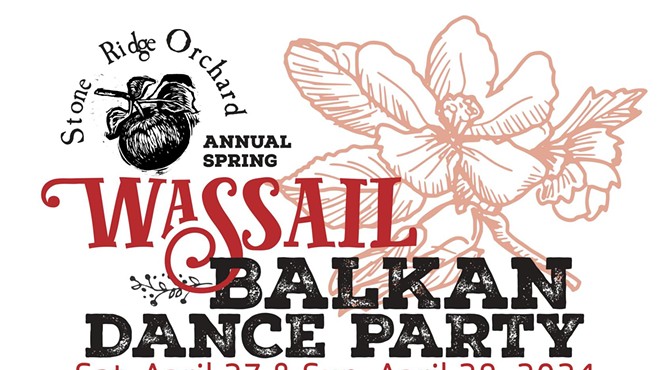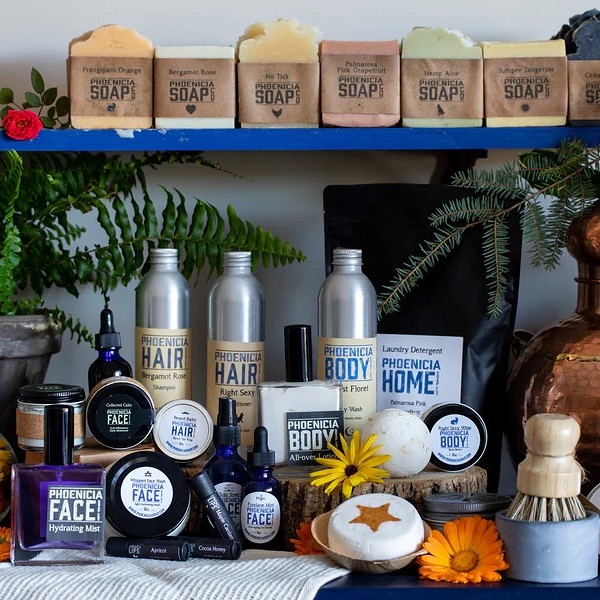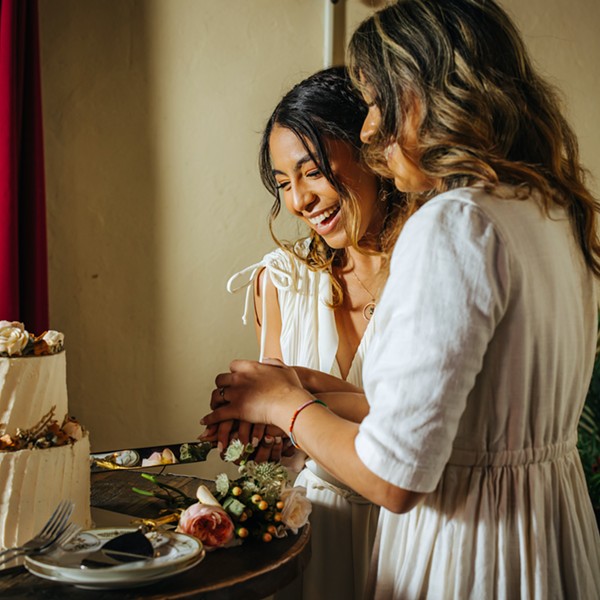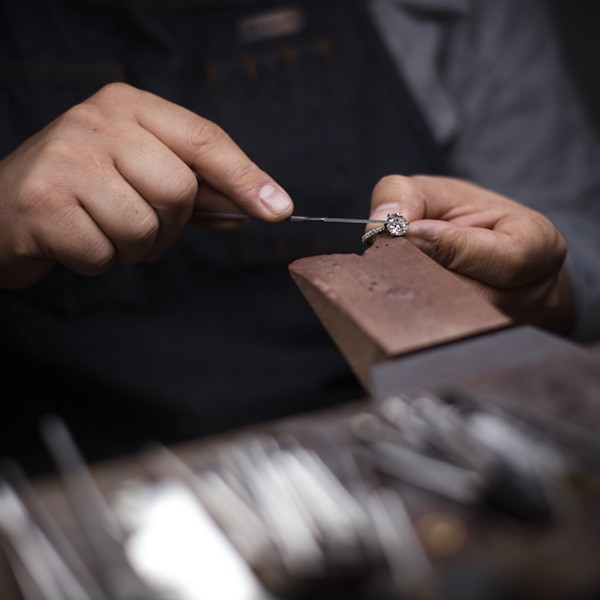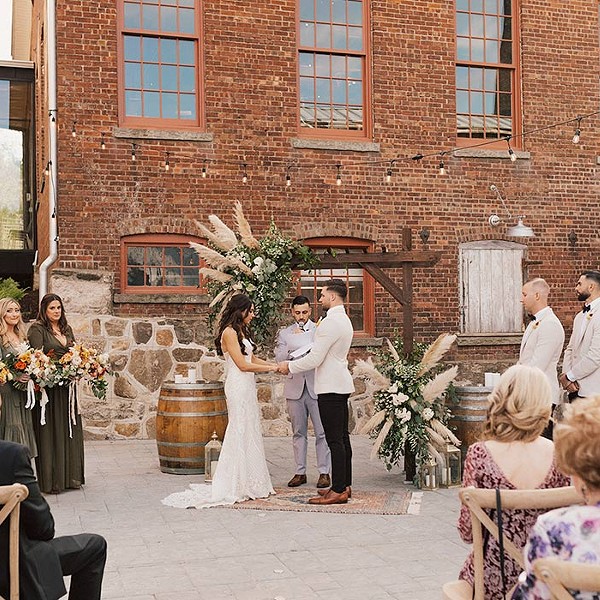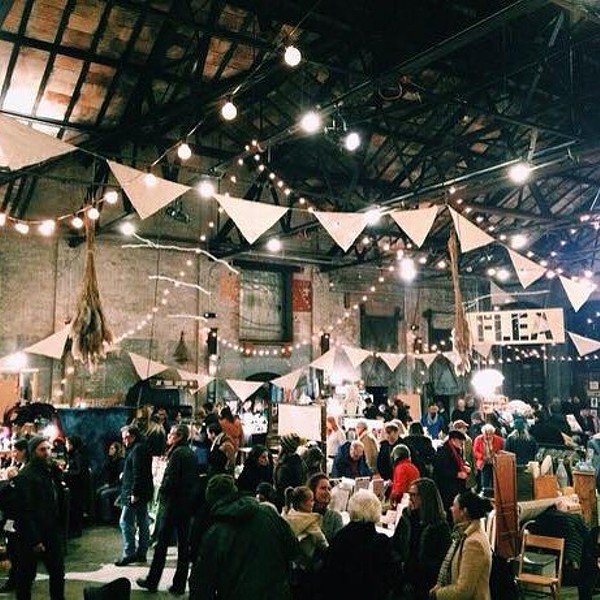Something old, something new, something borrowed, something blue. This was our grandmothers’ wedding refrain, and people would scurry to collect said items so that the bride would be ensured lifelong happiness. The old represented a link to her past; the new, a hope for the future; the borrowed guaranteed she could rely on friends and family; and the blue was considered a symbol of love. But today, many betrothed couples are placing fresh significance on the traditional mantra. For these wedding planners, the old is the planet, and they wish to love and honor it along with each other. By making new ceremony choices that support our biosphere, they lead the way for those to come and respect what they will leave behind. After all, the Earth is only borrowed. And while its oceans are blue, the latest wedding color seems to be green. Ceremonies of green are becoming so common, in fact, that a new lyrical phrase has been coined: the eco-chic wedding. So it is that loving the world while showing the world you love each other has become hip.
Take Jenny Brown and Doug Abel. In 2004 they had just purchased the acreage in Willow that would become the charitable, nonprofit Woodstock Farm Animal Sanctuary. Brown and Abel were preparing to create a haven for abandoned, neglected, and abused farm animals. To celebrate their new home and refuge, they chose to wed on their land, under the sun and set against the Catskills. The bride’s bouquet was made of wildflowers friends had picked from their grounds, her MoMo Falana dress was hand-dyed with eco-friendly pigments, and her ring was forged of platinum, a metal strong enough to withstand the wear and tear of daily farm work. Their 110 guests gave contributions to the sanctuary in lieu of conventional gifts and sat on hay bales while appreciating a vegan feast lovingly catered by eco-conscious New World Home Cooking of Saugerties. Mock chicken curry salad, chili-spiced seitan cutlets, Cuban black beans, and a chocolate cake of unrelenting richness were a few of the items on the impressive menu. As veganism is a key practice for Brown and Abel, their ceremony included readings from Diet for a New America by John Robbins, the renowned 1987 book on the cruelties of the meat industry and the health hazards of an animal-based diet.
“Being vegan is a way of treading more lightly on the Earth,” Brown explains as we sip coffee with soy creamer in her kitchen and three five-week-old rescue lambs bleat behind a baby gate nearby. “For us, being vegan equates to being green. Our wedding was a continuation of all that we believe in.”
Indeed, the United Nations published a report in 2006 stating that the livestock industry is the number one contributor to greenhouse gases, far outweighing automobiles. Livestock takes up 30 percent of the Earth’s entire land surface, tainting water sources and promoting further deforestation to make room for more cattle. It would be difficult to plan a green wedding menu without considering the detrimental effects of meat consumption on the planet. Some choose to serve only meat that comes from socially responsible farms, where thought is given not only to the animals’ comfort but also to the minimization of pollution. On-farm biodiversity integrates animals and crops, and such crops—organic, local, seasonal—make wedding guest plates inherently eco-friendly. Organic farming supports a sustainable ecosystem; soil is fed and toxic chemicals avoided. The land is thus set up to thrive. Also, seasonal, local plants do not require long periods of transport or refrigeration, saving fuel and encouraging lack of waste. If fish is desired as part of a meal, caterers can be hired who only purchase seafood from sustainable fishing sources that are certified by the Marine Stewardship Council, a nonprofit seeking to turn around the decline of world fisheries.
And what of the tableware on which to arrange these delectably green victuals? Disposable plastic and paper certainly won’t do. For those unable to afford rented china and silverware, World Centric offers a viable alternative. With plates and cups crafted of sugar cane and starch-based cutlery, all will biodegrade within 30 to 90 days. It’s the stuff Robin Henderson and her fiancé, Nate Williams, plan to use for their May 2008 ceremony. They will cook their own vegan meal and get their wedding cupcakes from Little Vegan Monsters of New Haven, Connecticut. As Henderson has been an employee and supporter of the Woodstock Farm Animal Sanctuary for two years, she’ll donate money to the sanctuary on behalf of Little Vegan Monsters for the goodies.
Henderson’s guests will be encouraged to donate to the sanctuary as well. They have also been directed to Gaiam and Home Depot for gift-buying options. An environmentally responsible company, Gaiam takes a holistic approach to its product selection, offering health-conscious items such as organic-cotton bedding and clothing, solar-powered goods, and educational sources on topics such as renewable energy and clean food choices. Home Depot gift cards will supply the groom with materials to build a barn on their property, where they plan to house rescued farm animals.
All of this gift information is being passed along to friends and family through e-mail correspondence. In an effort to save paper, Henderson and Williams created electronic invitations and posted their wedding information on www.theknot.com, a site where couples may display marriage announcements and details.
“We told people not to feel pressured to come if they were traveling from long distances, especially if they would have to fly,” Henderson says as she joins us in Brown’s kitchen, with its baby-lamb backdrop. She prepares syringes for the sanctuary animals’ medications as she speaks, a slight edge of bride excitement and tension in her voice. “We encouraged people to carpool, too. And lots of guests were invited to camp on our land.”
The earth-friendly checkpoints can be ticked off one by one for the Henderson-Williams spring celebration. Paper saved. Fuel conserved. Guests encouraged to sleep on the ground and save money and resources by forgoing hotel accommodations. Then there will be the outfits. Henderson bought her gown for $37 at a vintage clothing store. She will buy her eco-chic, nonleather heels from the vegan MooShoes of New York. The couple is investigating an organic cotton or hemp suit for Williams, one that has not cost the Earth and will last him for years.
Williams had the engagement ring done in Kingston, and the jeweler told him that he was the first man ever to ask about whether or not the diamond he wanted was conflict-free. With the Leonardo DiCaprio movie Blood Diamond out last year, awareness was raised of the human cruelties associated with African diamonds. Many are purchasing diamonds mined in Canada for this reason. Yet in planning a green wedding, some are skipping recently mined gems and metals altogether when choosing their bands. To mine land is to strip it and leave it wasted. It is to destroy the wildlife habitat there. According to greenKarat, a company dedicated to providing ecologically and socially responsible jewelry alternatives, there is enough gold above land to satisfy the jewelry industry’s needs for 50 years. Engaged duos can buy pre-owned pieces from businesses such as greenKarat or have rings made from recycled gold. The same goes for jewels. Used engagement rings work. There are also man-made, synthetic diamonds that simulate the exact composition, hardness, and sparkle of those taken from the dirt, and that are available at reasonable rates.
Those moments when the rings are slipped on happy fingers are a few of the many folks want captured on film. Green-conscious individuals will keep these photos in the digital domain as much as possible, conserving paper and decreasing the use of toxic development chemicals. Of course, most of the shots will be snapped outdoors, where natural light shines the way forward for the new husband and wife as they perhaps choose to stroll or bike from their nuptial grounds and into their eco-chic future.
The honeymoon can be an extension of greenness. Eco-travel options are available through organizations such as Natural Habitat Adventures, the World Wildlife Federation’s travel provider that donates a portion of its profits into conservation efforts, endeavors to reduce carbon emissions caused by transportation, and ensures recognition of the importance of protecting the beautiful and exotic locales visited.
In the beautiful warmth of Jenny Brown’s kitchen, Brown and Henderson finish their cups of coffee, tie back their hair, and prepare for the rest of the day. People have arrived who will foster the lambs. There is a busload of visitors from the Ulster-Greene ARC pulling into the dirt driveway. Animals must be tended to, the curious educated. Brown has had her green wedding. Henderson is planning hers. And there is little separation of these festivities from their daily lives. With truly green hearts, their love of the animals, the Earth, their work, and their partners blend into holistic harmony.
RESOURCES
- Home
- Arts
- Food & Drink
- Towns
- Home & Design
-
Towns
- Accord
- Amenia
- Beacon
- The Berkshires
- Catskill
- Chatham
- Cold Spring
- Cornwall
- Ellenville
- Gardiner
- Garrison
- Germantown
- Goshen
- Great Barrington
- Hunter
- High Falls
- Highland
- Hillsdale
- Hopewell Junction
- Hudson
- Hyde Park
- Kerhonkson
- Kinderhook
- Kingston
- Marlboro
- Middletown
- Millbrook
- Millerton
- Montgomery
- Mount Tremper
- New Paltz
- New Windsor
- Newburgh
- Orange County
- Pawling
- Peekskill
- Phoenicia
- Poughkeepsie
- Putnam County
- Red Hook
- Rhinebeck
- Rosendale
- Saugerties
- Stone Ridge
- Sugar Loaf
- Tivoli
- Wappingers Falls
- Warwick
- Woodstock
- Westchester
- Lifestyle
- Horoscopes
- Cannabis
- Wellness
- The River
- Events
- Chronogrammies
- Newsletters
- Add Your Event
- Support Us
- Login
- sign in
- Username
Tags
About The Author
Support Chronogram
Related Content
Website
Chronogram








